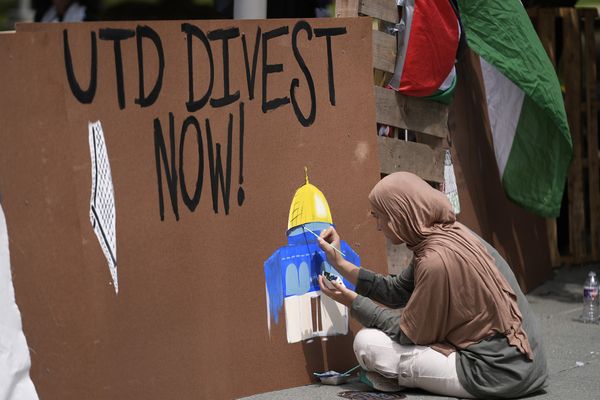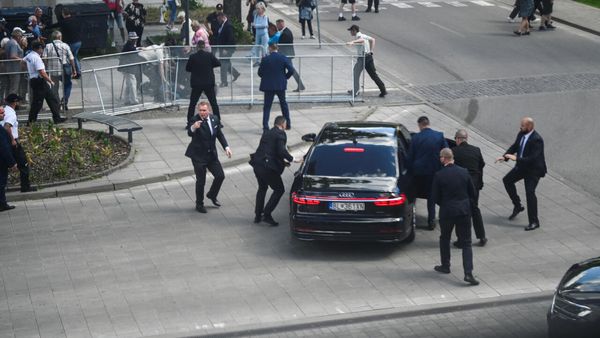North Korea leader Kim Jong Un’s prolonged disappearance from public view threatens South Korea President Moon Jae-in’s hopes for forming viable ties with the North after his success in national assembly elections this month.
Just as the impossible dream of rapprochement seemed possible at last, the chances of significantly improving North-South relations are diminished by the simple fact that Kim may not be available for dialogue, much less decision-making.
“With the uncertainty surrounding KJU’s health, I don’t think that any North-South economic development can take place,” is the blunt assessment of Seoul-based investor Hank Morris. “The sanctions continue to be an impediment too.”
That much seemed clear when North Korea’s state media overlooked the second anniversary on Monday, April 27, of what appeared two years ago as a landmark date in modern Korean history, a summit between Moon and Kim at the truce village of Panmunjom 40 miles north of Seoul.
While Kim remained out of sight amid intense speculation about his health, Moon chose the day to call for North and South to engage in their “most urgent and desperate task.” He said on South Korean television networks, “South and North constitute a single life community. This will serve as the basis for a peace community.”
In that spirit, Moon promised to “explore the most realistic and practical ways for South-North cooperation” in the face of UN and U.S. sanctions imposed on North Korea as well as the coronavirus, which has reportedly spread to an alarming degree across the North.
The fact is North Korea remains shut tight to foreign visitors other than a Chinese medical team that reportedly arrived last weekend amid reports that its mission was to see what to do about Kim’s health and also to discuss future North Korean-Chinese relations in case he is incapacitated.
Since North Korea began urgently closing its borders against COVID-19, there has been almost no discussion about reopening the Gaeseong Industrial Complex near Panmunjom that Moon’s predecessor, Park Geun Hye, ordered closed in 2016.
That’s “hardly surprising,” says Tom Coyner, long-time business consultant based in Seoul. North Korea looks on the venture “in purely political terms with commercial considerations being at best of secondary priority.” As of now, he says, “there is no political priority” and “possible cross-border infection offers political hazards among the North Korean cadre who may dare advocate or administer the same.”
As if to dramatize the frustrations and the hopes, South Korea’s unification ministry staged a ceremony as a reminder of plans to open railroads linking North and South Korea. South Korea’s Hyundai Engineering and Construction built lines to both the Gaeseong complex and, on the east side of the peninsula, to the Mount Kumgang tourist zone, which was closed to tourism from the South in 2008.
No traffic has ever moved on those lines other than test runs that North Korea stopped several years ago though South Korean delegations visited North Korea in 2018 studying ways to modernize the North’s dilapidated rail system. They returned with reports of tracks and equipment badly in need of repairs and upgrading but have not been back since then.
On top of a crumbling infrastructure, North Korea also faces grave economic problems that make opening of North-South ties all the more difficult.
“As in much of the world, the coronavirus pandemic has shut down North Korea’s economy,” writes Thomas Byrne, president of the Korea Society in New York, in the journal Foreign Policy.
“The country’s fiscal resources are overwhelmed, forcing Pyongyang to issue domestic bonds for the first time in 17 years,” says Byrne, formerly a top analyst for Moody’s. “The [corona] crisis highlights the country’s financial weakness, which stems from its decades-long self-imposed isolation and more recent international sanctions.”
Byrne paints a picture of a country so mired in debt that rescue seems virtually impossible. Doors are closed by worries about COVID-19, which the North has yet to acknowledge among its own people.
“Before turning to debt, North Korea attempted to wring money from state factories and the country’s budding donju entrepreneur class of merchants—and, increasingly, financiers—who best exemplify North Korea’s ‘reform from below’ dynamic,” says Byrne. “They rose from the collapse of the central plan and have a symbiotic relationship with a state officially hostile to capitalism, existing in a limbo with little political or legal protections.”
Byrne cites the Minju Chosun, a North Korean government newspaper, calling on factories and businesses “to fulfill their tax obligations so that the state could meet its plans to grow the budget by 4.2% this year.” Now, he says, “that seems an impossibility.”
Kim last appeared as reported by the North’s state media on April 11 at a meeting of the political bureau of the ruling Workers’ Party when he called for more measures to battle the coronavirus. Talk about his condition often centers on his failure on April 15, the 108th anniversary of the birth of his father, Kim Il Sung, founder of the North Korean state after World War II, to lay a wreath in front of the glass case containing the embalmed body of his father.
Ironically, it was on that day that Moon’s Minjoo, Democratic, Party won 180 of the 300 seats in the National Assembly, providing overwhelming endorsement of his policies, notably South Korea’s success in combating COVID-19. With a firm majority behind him, Moon still hopes to ram through measures providing support for small and medium-sized enterprises to compete with the chaebol, i.e. the conglomerates that dominate the economy, and he is determined to improve ties with the North.
South Korea’s economy is suffering too, however, as a result of declining exports to foreign trading partners hit by the coronavirus.
“Meanwhile, the world is playing the game, ‘Where in the world is Chairman Kim,’” says Tom Coyner. “Well, we know he is in North Korea, but only that. We don’t even know for sure that he is comatose or even alive. Should he be either, important economic initiatives may well be on hold.”







